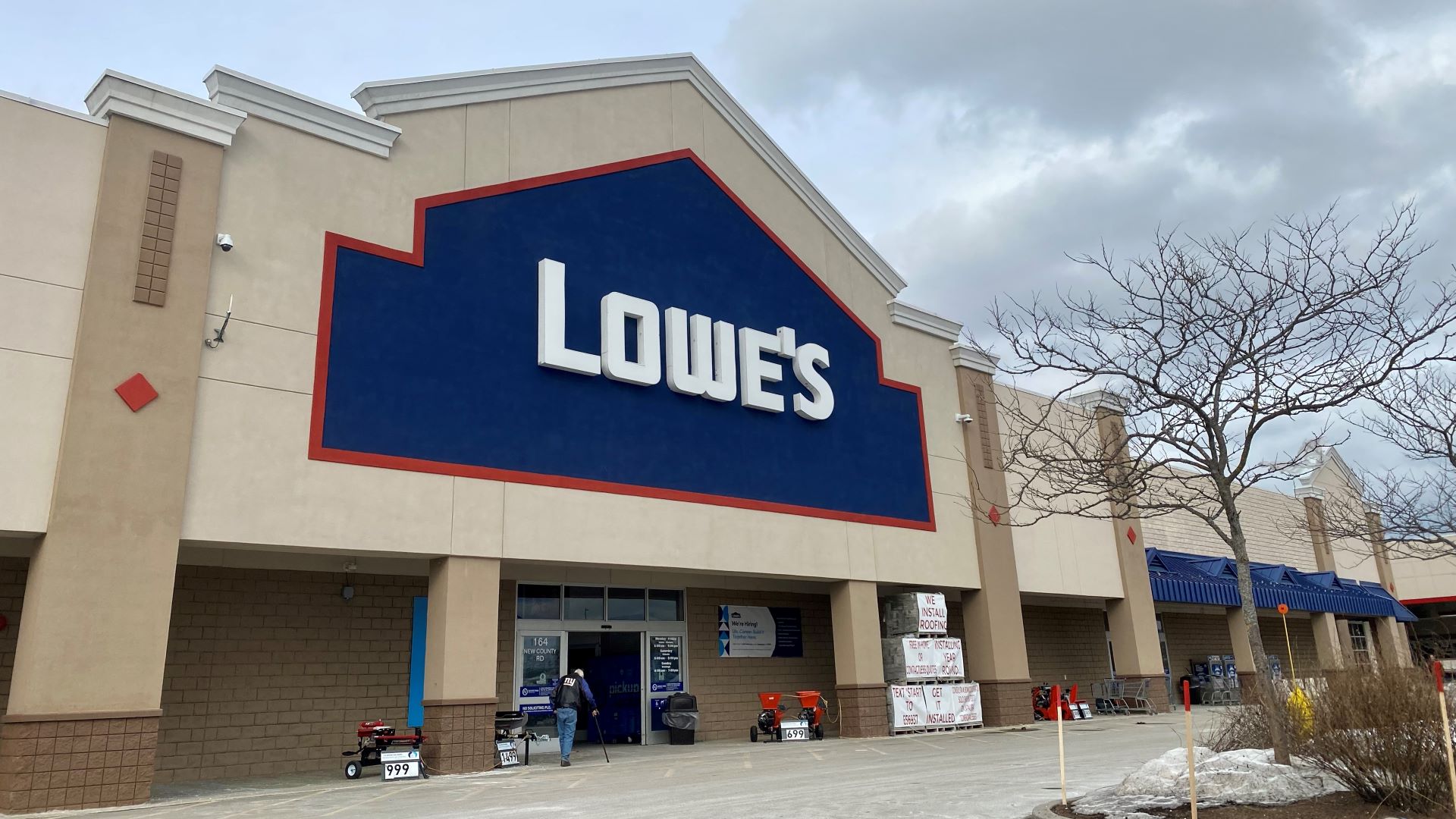It’s Wednesday afternoon at Walmart in Thomaston, and shoppers are rushing around — grabbing dog food, picking up prescriptions, perusing the towel aisle. It’s clear that the store, less than a decade old, is busy if not thriving.
That’s not the case according to attorneys representing Walmart, who have filed appeals arguing that the Thomaston location, and a number of other stores around Maine and the country, should, for the purposes of property tax assessment, be compared to a shuttered warehouse rather than an open store.
“They say we should be valuing their store equivalent to a store that’s been closed and sold with restrictions on it,” said Dave Martucci, the Thomaston assessor who called the situation “absurd.”
Known as the “dark store” theory, the argument being made by retailers is that their open, bustling stores are equivalent to ones that failed and closed. Companies argue that the stores are so specially designed that they are functionally obsolete nearly as soon as they are built, and will lose much of their value as soon as the retailer leaves. Corporate attorneys are deploying the strategy in an effort to slash property taxes, often by hundreds of thousands of dollars, in communities around the country.
Despite an outcry over the problem several years ago, and a vow by Maine lawmakers to help towns fight the appeals, the onslaught of requests has continued around the state. They are overwhelming assessors and creating a years-long backlog at a state board that hears the cases, as well as costing taxpayers hundreds of thousands of dollars in lost tax revenue and legal fees.
Since 2015, according to data collected by The Maine Monitor, large retailers have succeeded in lowering the valuation of their properties by more than $16 million in communities from Biddeford to Bangor, resulting in hundreds of thousands of dollars in tax reductions. Hundreds of millions of dollars in abatement requests are still outstanding around the state.
Take Thomaston. Looking to expand beyond its successful Rockland location just a few miles away, Walmart opened a Supercenter there in 2013, complete with a pharmacy, grocery store, garden center, hair salon and vision center. The 150,000-square-foot building cost roughly $28 million to construct.
Thomaston officials gave a warm reception to the company, which promised to employ 300 people. “Welcome Wal-Mart,” shouted then-Thomaston Town Manager Valmore Blastow to a crowd that gathered on opening day, according to the Bangor Daily News. “We have been pursuing this day for 13 years.” The town even spent $3 million on a sewer extension to reach that section of Route 1, in an effort to entice Walmart and other large retailers to locate there.
Then, five years after the store opened, attorneys representing Walmart filed an appeal with the town’s assessing department. They argued that the Supercenter was worth $8.9 million, $7 million less than the $15.89 million that Martucci, the assessor, had come up with. The proposed valuation would cut the company’s annual tax bill nearly in half, by $172,354, meaning less money for schools, government, roadwork, and police and fire departments, and more profit for Walmart.
The company has filed nearly identical appeals every year since.
“This is all a strategy to wear down the town,” said Martucci.
Retailers, assessors disagree on approach
Assessors determine property value in a number of ways. They take into account the cost to replace the facility, subtracting value for depreciation and adding improvements that have been made. For retail properties, they might also look at the revenue the property generates, or at sales of comparable properties on the market. All of those factors are considered and reconciled to arrive at a final figure.
Companies, however, say depreciation is a much bigger factor than assessors take into account, and the revenue a business generates is not meaningful in valuing a property. They also argue that it’s hard to get someone to rent or buy a defunct big box store and when stores do sell, it’s for much less than the original owners paid to get the place up and running.
That’s often true. The former Walmart site in Rockland, which closed when the Thomaston store opened down the street, was valued at $10.1 million when it was open, but sold to Ocean State Job Lot for just $3.13 million in 2013. A shuttered Walmart in Ellsworth sold for $3.6 million in 2009, $1.6 million less than the company paid a decade earlier, not including improvements. The building now houses a Marden’s and a Tractor Supply.
But assessors say comparing sales of former big box stores to thriving open stores doesn’t make much sense for the purposes of property valuation. Location is everything in real estate, and those stores may have closed because their location was less desirable. Assessing rules require property to be valued as it exists on the date of valuation, not what it might look like at some future date. And the market for second-generation big box stores is different, meaning they may have a different “highest and best use” than when they were built.

Also, stores may close because they don’t meet certain benchmarks or a company wants to expand, which Martucci pointed out is “purely a business decision and does not necessarily reflect any market condition that affects value.” Plus, most former big box stores are encumbered by deed restrictions that prevent other companies from operating anything similar in that space, a common tactic for large retailers when they vacate a property.
Deed restrictions put in place by Walmart on the former Rockland store, for instance, prohibit anyone from using the facility as a grocery store, a discount department store, a wholesale club, a pharmacy or a recreational facility, among others.
That makes it almost impossible to tell what the property would have sold for without limitations.
“It’s understandable that they don’t want competition,” said Rep. Ann Matlack, D-St. George, who has sponsored legislation that aims to help assessors fight the requests. But because of the deed restrictions Walmart placed on the property, “what the city of Rockland eventually got was a building that was of a lesser value,” said Matlack.
“Then the Super Walmart of Thomaston said, ‘This is what our building will look like in the future. We think this is comparable and we want our assessment lowered because we may be wonderful right now, but eventually we’re going to look like that.’ ”
‘Either way the taxpayer is going to lose’
At first, New Jersey-based tax firm Stavitsky & Associates, representing Walmart, offered little reasoning on why it felt the Thomaston store was overvalued. When the town said it would deny the request without more information, Stavitsky provided an analysis that compared the Thomaston Walmart to six stores that recently sold or were for sale, only one in Maine.
Asked about the Thomaston case, Bruce Stavitsky said he was not authorized to speak on behalf of Walmart. Walmart and Lowe’s did not return requests for comment.
Most stores used for comparison were decades old. None had a supermarket, as the Thomaston building does. Some properties being offered as comparisons for assessing purposes were vacant, with deed restrictions intentionally limiting how the properties could be used.
The Stavisky filing also claimed, according to the Thomaston Board of Assessors, that “the real estate has expenses but no income attributable to it,” an assertion the board called “astonishing.” The local board denied the appeal.
Walmart’s attorneys pressed on. The company took the matter to the State Board of Property Tax Review, which nearly four years later has yet to hear the case. Every year since, Walmart has filed nearly identical abatement requests, costing the town tens of thousands of dollars in staff time and legal fees. All are pending review by the state board.

If the town loses, said Martucci, “We’ve got almost $900,000 in tax rebates we’d have to make, plus another $71,000 in interest. That’s real money.” That doesn’t include the loss in taxes going forward.
Martucci estimated that Thomaston taxpayers have spent $30,000 in legal fees alone in the past few years to deal with the requests. Other assessors said it was difficult to estimate their costs but that they were often “significant.”
“If we stick to our guns,” said Martucci, “we incur tremendous amounts of cost. If we don’t, then we lose a tremendous amount of tax value. Then everybody else in town has to pick up that slack. That tax money has to come from somewhere.”
The tactic of regularly appealing abatements is common and growing. Since 2015, retailers including Shaw’s, Walmart, Home Depot, Lowe’s Walgreens, Sam’s Club and BJ’s have filed at least 66 abatement requests in 17 communities around the state, according to records compiled by The Maine Monitor.
In some cases they’ve prevailed, at least in part. For 2018 and 2019, Bangor agreed to a two-year settlement value of $17,000,000 for the Walmart store. This resulted in a $2.19 million reduction in 2018, but only a $1.33 million reduction in 2019 as the total assessed value had come down slightly between 2018 and 2019. Scarborough, faced with requests from Walmart, Lowe’s and Sam’s Club, agreed to a $2.7 million reduction in Walmart’s value in 2018 and a $1.76 million reduction for Lowe’s in 2021.
Martucci understands why towns want to settle, but he worries that doing so may not actually be legal. It may also set a precedent that would make it easier for others to make a similar case, shifting more and more property tax burden onto residents.
“If we arbitrarily reduce the value to settle with them, we’re not basing that on any of the facts we’re supposed to use,” said Martucci. “If we don’t settle with them, the taxpayer is funding the bill for the legal process. Either way the taxpayer is going to lose.”
State board that hears cases is ‘non-existent’
Complicating matters in Maine is that the State Board of Property Tax Review, which hears requests that have been denied at the local level, has not heard a case in at least two years, according to several assessors.
Tens of millions of dollars in abatement requests and more than 30 cases dating to 2018 are still pending review and have not been scheduled for a hearing, according to documents obtained by The Maine Monitor.
The board, which has 15 members serving three-year terms, was created in 1986 to hear appeals from denials of tax abatements by assessors or local boards of assessment review. The state board deals only with non-residential property with a valuation of at least $1 million, as well as cases related to tree growth, farmland, open space, mine site and working waterfront classified property.
Assessors around the state are frustrated with the backlog.
“The state board has been dysfunctional for many years,” said Martucci. Several assessors said they thought staffing issues, underfunding, board vacancies and the pandemic contributed to the problem.
Thomaston is still waiting to have the 2018 Walmart case heard by the state board. While it waits, Walmart continues to file abatement requests — one each year since 2018, all pending review.
Had the board heard the 2018 case in a timely fashion, it likely would have prevented those subsequent appeals, said Martucci, by providing a clear answer for assessors not just in Thomaston but around Maine. That could have saved taxpayers a lot of time and money in staff time and legal fees.
Rep. Matlack said that cases before the board, which was conceived to deal primarily with land use issues, had become increasingly technical and complex.
“It’s morphed over time to deal with other tax implications, so it’s more difficult for them, although they’re very smart people. They don’t really have the staff. They don’t have anybody that can really help them.”

There is funding in the 2022-23 state budget for two positions, a supervisor to oversee the board’s process and clerical staffing, said Matlack. That will hopefully help alleviate some pressure.
When asked about the backlog, vacancies and the Thomaston case, spokesperson for the Department of Administrative and Financial Services Kelsey Goldsmith told The Maine Monitor in an email the board “will not be able to comment about this ongoing legal matter.”
Legislation aims to help assessors
Assessors hope legislation carried over from last session will provide some relief to communities. LD 1129, which recently passed out of committee, would require assessors to “consider age, condition, use, type of construction, location, design, physical features and economic characteristics” when valuing a property. It would apply to all property assessments, not just retail facilities, and would also bar companies from making the argument that restricted properties (such as the former Rockland Walmart) are comparable for assessing purposes to those that aren’t under such limitations.
The bill would allow assessors to “have another weapon in our arsenal to say you can’t take a thriving store or retail store that’s doing well, that was built to do what it’s doing, and is still operating, and then tell me that the value of that should be the same as a store that failed or a store that’s old and no longer functional,” said the Camden and Rockport assessor, Kerry Leichtman, during a work session on the legislation earlier this month.
That would be nothing new. It would codify what assessors already do, said Leichtman, “but put it into statute rather than common practice.”
The legislation wouldn’t prevent anyone from appealing the assessment of their property, but would save municipalities a lot of money in court proceedings and staff time, said Leichtman, by giving assessors something to point to if a company makes an argument that it’s open business is equivalent to a vacant store.
Towns shouldn’t expect the legislation to prevent all big box abatement requests, however, said Peter Lacy, an attorney with Maine Revenue Services, during a committee hearing.
“Municipalities not being able to have the time or the wherewithal to go head to head against a Fortune 500 company is not necessarily something that you could solve statutorily,” said Lacy.
Adding statutory language may even be a setback because it means new language that hasn’t been interpreted by the courts, Lacy added.
“It’s not clear that there is a silver bullet for this issue.”








